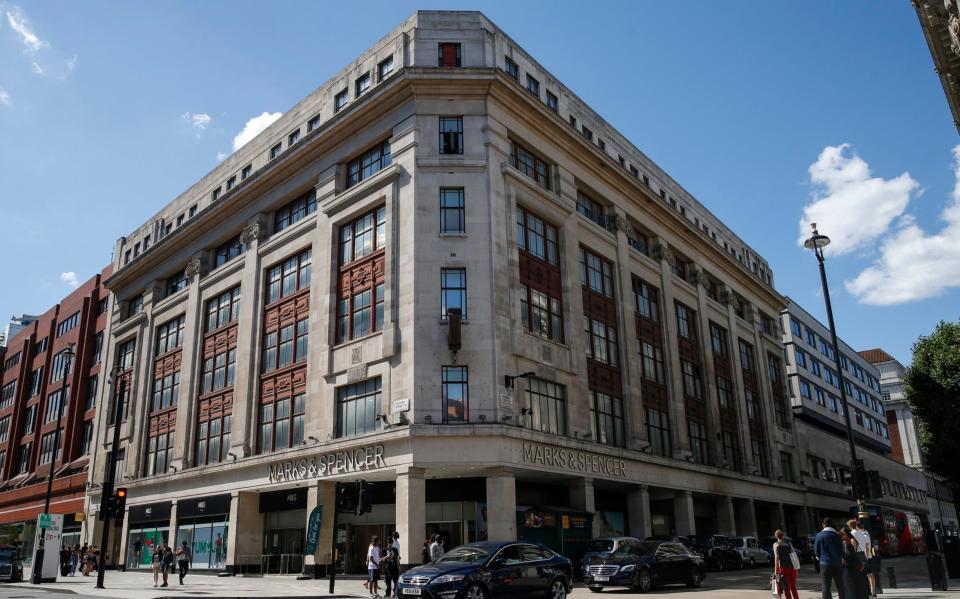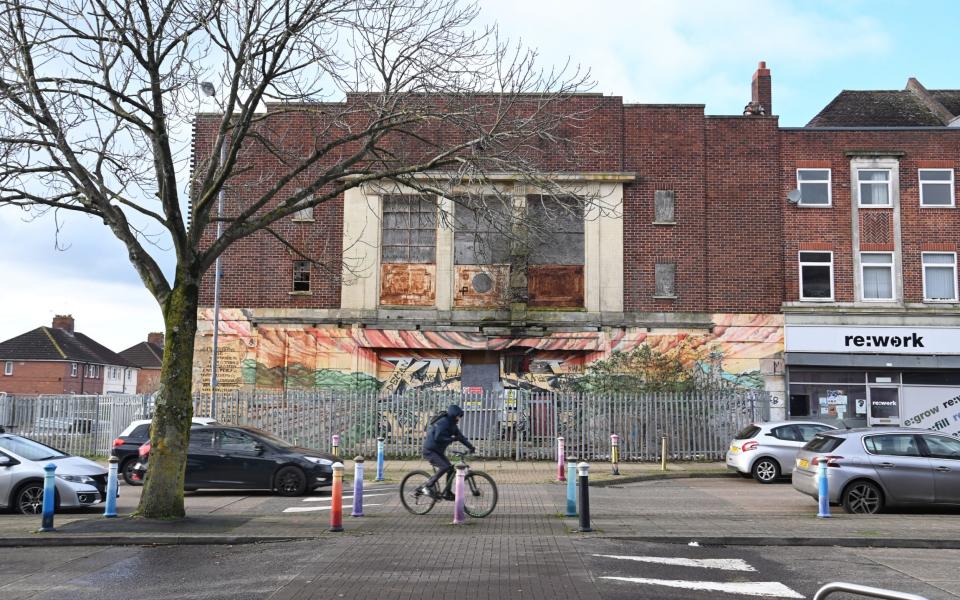Would Grade III save Britain’s heritage – or preserve it in aspic?

The Broadway has something of the style moderne of its era. This 85-year-old former cinema may be boarded up and graffitied, but its red-brick façade remains defiantly elegant. For Bristolians in the suburb of Knowle West, the building is more than its art-deco architectural details. It represents optimism, glamour and a sense of belonging.
“People still talk about concerts like P J Proby’s performance in 1964, the boxing matches it held, and the ‘poor door’ at the back that allowed people in cheaply,” says Charlie Watts, a local journalist and campaigner trying to save the Broadway from demolition and a plan to replace it with apartments. “That shows the connection people have to the place.”
Watts accepts that it’s no grand palace, and that housing is needed in Bristol. But, he argues, the façade could be saved. Its loss would mean obliterating the cultural memories of a working-class neighbourhood: “The council is bulldozing our heritage. Knowle West has had a lot taken from it. And the community wants something back.”
Campaigners are running out of options. A last-ditch listing application was refused by Historic England (HE) in an assessment report, on the grounds that the Broadway “lacks the bold massing, variety and exuberant detailing found in better cinema buildings of this period”. Bristol City Council, which owns the building, did not respond to a request for comment.
Yet people fighting to save the buildings they love were galvanised earlier this month, when a group of architects backed by Kevin McCloud, the designer and television presenter, called for a new category of protection: Grade III.
Since the end of the Second World War, about 500,000 buildings in England of architectural or historic significance have been listed at Grade II, Grade II* or Grade I by successive conservation bodies, the latest being HE. (Different regimes operate in Scotland, Wales and Northern Ireland.) HE advises the Culture Secretary, who has the final say.

Listing protects buildings from demolition, unless owners secure special permissions. Grade III status would protect the remaining 25 million buildings with a revision to the Town and Country Planning Act. That status would apply automatically to everything – at least eventually; this, its proponents say, would make retrofitting and repurposing the norm.
Writing in the Architect’s Journal, Will Arnold of the Institute of Structural Engineers says: “[Grade III] would come with just one rule: the property may only be demolished if it is structurally unsafe, or is given special dispensation by the local planning authority.”
The Grade III campaign is about saving carbon. About 50,000 buildings are demolished every year. Architects and environmentalists are alarmed by the volume of waste it generates, and the “embodied carbon” lost. Embodied carbon in the Broadway, for example, is the energy that was used in the 1930s in mining, manufacturing, transporting and installing its original building materials; on top will come the carbon used to dispose of waste such as rubble and brick, then whatever carbon is used in building the new apartments.
Grade III’s supporters say that the current listing system does not reflect the urgency of the climate crisis. Watts, meanwhile, is more concerned with Knowle West’s pride and history. One common criticism of the criterion of “significance” is that it doesn’t always reflect public opinion. Marks & Spencer’s plans to demolish and rebuild its 1929 Oxford Street premises – fine, handsome, with a Portland Stone façade, but not interesting enough to merit listing – has been passed to a public inquiry overseen by the independent planning inspector, following public dismay, pressure by campaigners and a report that raised environmental concerns.
One rare aspect of the Grade III debate is how it has brought architecture’s progressives and traditionalists closer to consensus.

“We have to find a way better to preserve and, critically, re-use our fine early 20th-century buildings,” says Nicholas Boys Smith, director of Create Streets, a research group in the traditionalist camp that argues in favour of low-density development.
He says there’s a “good case to make” for Grade III, which he wants to see applied to pre-war 20th-century buildings “broadly beneficial to the public and… of conservation-area merit” – such as the Broadway. “Our high streets are packed full of elegant former cinemas and department stores. They have a proud past. They should also have a future.”
Even some developers back it. “Every new building trashes the planet with fossil fuels used in brick, sand and concrete – it’s just a fact,” says Chris Brown of Igloo, which builds residential inner-city developments.
Igloo worked on Trent Basin in Nottingham, a riverside development that mixes old commercial warehouses with new homes. Several young businesses, including a bakery, have moved in. “Keeping existing buildings adds character and value to a place, and it almost doesn’t matter what they are,” says Brown. “Old buildings tend to be cheaper to rent, so creative businesses can occupy them to do interesting things.”
Others, however, have reservations. Otto Saumarez-Smith, assistant professor of architectural history at the University of Warwick and a trustee of the Twentieth Century Society, a heritage organisation, supports its environmental aims to encourage retrofitting. “It’s an absurdity that more and more London office blocks from the 1990s are being demolished,” he says. “The cycle of redevelopment is unspeakably fast.” He takes issue, however, with the name. “I wish it hadn’t been called a ‘listing’. It’s not about historical or architectural significance, and [the name] confuses that.”

John Myers of the Yimby Alliance, a pro-house-building campaign group, is more critical of Grade III’s supporters. “They are missing the point of the listing regime, which is to focus on buildings that are special. To list everything means nothing is.
“I’m all for retrofitting. But imposing listings on every single building would mean layers of cost and bureaucracy.” The risk, he says, is that “we will block housing that we desperately need”.
So how likely is Grade III? A spokesman for DCMS says it has no plans to change the listings process, while at a second reading in Parliament last November, the Government did not support a proposed bill that would have introduced embodied carbon regulations to building rules.
Will Hurst, managing editor of the Architects’ Journal, says: “Grade III is useful because it’s easy to understand and underlines the value of all existing buildings. But it’s just one way of tackling the problem.”
The tax system is another. The Journal is calling for a cut in VAT rates on refurbishment, repair and maintenance, from 20 per cent to 5 per cent or less. Currently, it’s often cheaper to demolish a building than to reuse it. The Government says it intends to consult this year on measuring and reducing embodied carbon in buildings.
But changes would come too late for the Broadway. Calling its loss “utterly bonkers”, Boys Smith says: “There is not a snowball’s hope in Hades that what replaces it will be as good or as courteous to the neighbourhood.”

 Yahoo News
Yahoo News 